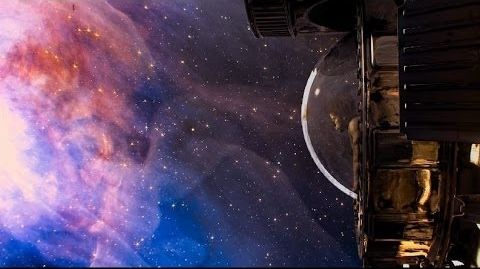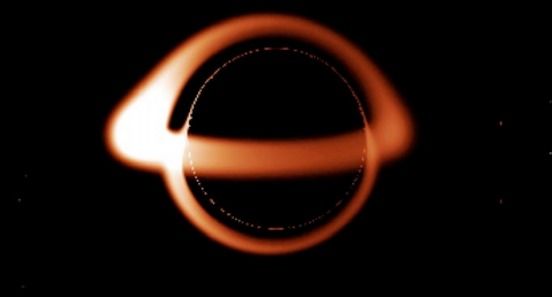Australian researchers believe they are close to being able to use stem cells to regrow human bone and tissue damaged by injury, illness or old age.
A Russian rocket company has announced that it’s working on a space taxi that’ll shuttle crews from the ISS down to the moon. The plans were announced at an international conference on space exploration just outside Moscow and reported by Russia Today. The craft, provisionally named Ryvok, would be permanently docked on the ISS — or its replacement — transporting cargo and crews to the lunar surface. Each flight would be powered by fuel in an “accelerator block,” brought up from Earth on the back of a Russian rocket. The report explains that it’s likely to be the Angara A5, a heavy-lift vehicle that’s intended to replace the trusty old Soyuz.
Once it’s time to return to the ISS, the craft will blast off the moon for the five-day return journey. In order to slow its speed on approach, the ship will deploy a 55-square-meter “umbrella” that’ll reduce its speed like a parachute on a drag racer. At least, that’s the idea. The craft is expected to be developed by 2021, with the first launches anticipated to take place in 2023. The company is suggesting that its concept would be cheaper and faster to implement, since you don’t have to wait for the Angara rockets to be certified safe for human transportation.
If there’s one thing that’s given us pause, it’s the historical parallel between this Russian plan and Star Trek: Deep Space Nine. After all, things were relatively staid on the space station until the crew got their hands on the USS Defiant. After that point, the whole Federation suddenly found itself embroiled in a universe-wide war with a vastly superior enemy. There’s always a slight worry that, mere months after Ryvok docks at the ISS, that humanity, too, will find itself similarly overwhelmed.
WEHI | Apoptosis
Researchers at the Walter and Eliza Hall Institute in Australia have discovered a new way to trigger cell death that could lead to drugs to treat cancer and autoimmune disease.
Programmed cell death (a.k.a. apoptosis) is a natural process that removes unwanted cells from the body. Failure of apoptosis can allow cancer cells to grow unchecked or immune cells to inappropriately attack the body.
Watch this fantastic futuristic short film directed by talented Collin Davis and Matt Litwiller, written by Eric Bodge and shot by Travis Labella! The year is 2183. Earth is dead. With all evidence of organic life lost, a cosmic archaeologist travels faster than light into deep space to capture images of the once vibrant planet. When his vessel is damaged he must take matters into his own hands, risking his life to witness humanity’s lost home.
Telescope Sound Track — Download Now: http://www.telescopemovie.com/about/2013/11/18/telescope-sou…wnload-now
More information: http://www.telescopemovie.com/about/
Credits
Director / Editor Collin Davis.
Director / Producer Matt Litwiller.
Writer / Producer Eric Bodge.
Director of Photography Travis Labella.
With the help of many friends, Telescope was completed in 2013 in Los Angeles.
TRT 10:00 / 4K / Color / USA / 5.1 Surround (English)
Email us: [email protected]
http://www.telescopemovie.com
In principle, nothing that enters a black hole can leave the black hole. This has considerably complicated the study of these mysterious bodies, which generations of physicists have debated since 1916, when their existence was hypothesized as a direct consequence of Einstein’s Theory of Relativity. There is, however, some consensus in the scientific community regarding black hole entropy—a measure of the inner disorder of a physical system—because its absence would violate the second law of thermodynamics. In particular, Jacob Bekenstein and Stephen Hawking have suggested that the entropy of a black hole is proportional to its area, rather than its volume, as would be more intuitive. This assumption also gives rise to the “holography” hypothesis of black holes, which (very roughly) suggests that what appears to be three-dimensional might, in fact, be an image projected onto a distant two-dimensional cosmic horizon, just like a hologram, which, despite being a two-dimensional image, appears to be three-dimensional.
As we cannot see beyond the event horizon (the outer boundary of the back hole), the internal microstates that define its entropy are inaccessible. So how is it possible to calculate this measure? The theoretical approach adopted by Hawking and Bekenstein is semiclassical (a sort of hybrid between classical physics and quantum mechanics) and introduces the possibility (or necessity) of adopting a quantum gravity approach in these studies in order to obtain a more fundamental comprehension of the physics of black holes.
Planck’s length is the (tiny) dimension at which space-time stops being continuous as we see it, and takes on a discrete graininess made up of quanta, the “atoms” of space-time. The universe at this dimension is described by quantum mechanics. Quantum gravity is the field of enquiry that investigates gravity in the framework of quantum mechanics. Gravity has been very well described within classical physics, but it is unclear how it behaves at the Planck scale.
Here’s an article on transhumanism in Oregon’s largest paper, The Oregonian: It highlights something I’m trying to create: the impact of a “longevity vote” in the elections to make a difference for the length of people’s lifespans.
Zoltan Istvan is ready to encourage his supporters to vote for either Hillary Clinton or Donald Trump in November — if one of the major-party candidates agrees to put him to work in the White House.
And they’d better take his offer seriously, because he figures he just might be able to tip the election whichever way he wants.
“If we’re getting down to the end, and it’s close, as expected, this could be appealing to a candidate,” Istvan told The Oregonian this week. He believes he could bring a candidate somewhere between 250,000 and a million votes.
“This summer, more than 2,000 people, many of them employees of the Bay Area’s tech giants and startups, will participate in six Camp Grounded events in California, New York, North Carolina and Texas as a way to reconnect with fellow human beings without a laptop, smartphone or Apple Watch.”
A computer has cracked the Boolean Pythagorean triples problem — but is it really maths? http://bit.ly/1sAVMB8

 WEHI | Apoptosis
WEHI | Apoptosis






